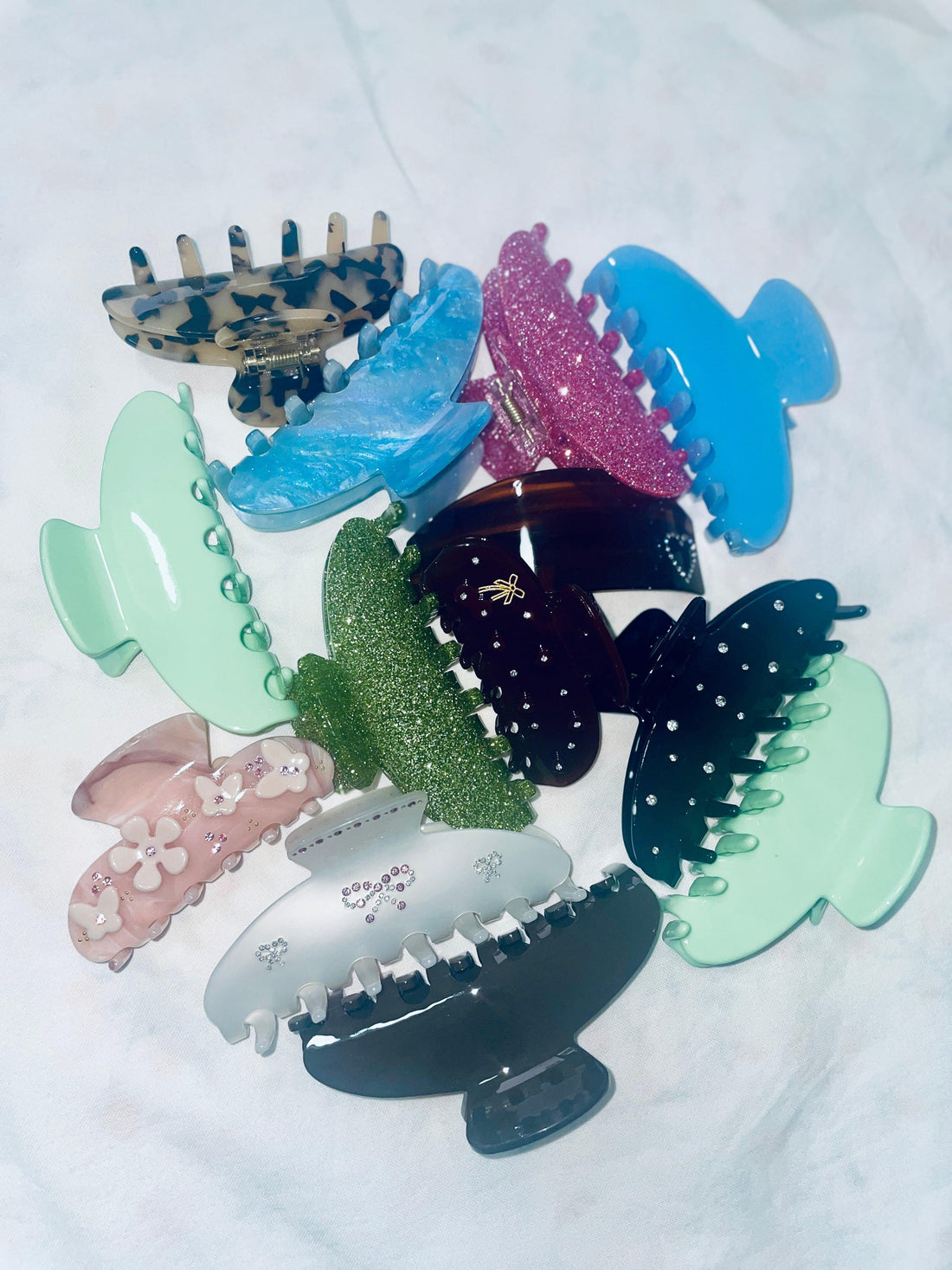
Beyond Basic Plastic: Unveiling the Beauty and Benefits of Cellulose Acetate
Share
Beyond Basic Plastic: Unveiling the Beauty and Benefits of Cellulose Acetate
Ever admired a hair claw clip with a rich, almost pearlescent sheen and a satisfyingly sturdy feel? Chances are, you were holding something crafted from Cellulose Acetate. But what exactly is this intriguing material, and why is it becoming a go-to choice for beautiful and durable accessories? Let's dive in!
What in the World is Cellulose Acetate?
Forget the image of harsh, petroleum-based plastics. Cellulose Acetate is a natural polymer derived from cellulose, the main structural component of plant cell walls. Think of it as a sophisticated cousin of paper and cotton!
The process involves treating purified cellulose (often from wood pulp or cotton linters) with acetic acid and acetic anhydride. This chemical reaction transforms the rigid cellulose fibers into a moldable material that can be colored, shaped, and polished to a high gloss.
A Glimpse into History: Cellulose Acetate Through the Ages
While it might sound like a modern marvel, the story of Cellulose Acetate dates back over a century!
- Early 20th Century: Its initial applications were in the textile industry as a key component of early synthetic fibers like "artificial silk" or acetate rayon.
- Photography and Film: Cellulose Acetate also played a crucial role in the development of safety film for photography and motion pictures, replacing the highly flammable cellulose nitrate.
- Eyewear Revolution: In the mid-20th century, its versatility and aesthetic appeal made it a popular choice for spectacle frames, offering a lightweight, durable, and stylish alternative to traditional materials.
Cellulose Acetate in Modern Life: More Than Just Clips!
Today, Cellulose Acetate's unique properties make it a valuable material in a diverse range of products:
- Eyewear: High-quality spectacle and sunglass frames continue to benefit from its durability, vibrant color options, and comfortable feel.
- Fashion Accessories: Beyond hair clips, you'll find it in jewelry, buttons, belt buckles, and decorative elements.
- Tool Handles and Components: Its strength and machinability make it suitable for certain industrial applications.
- Packaging: In some niche applications, its biodegradability offers an eco-friendlier alternative to conventional plastics.
The Chic Choice for Your Locks: The Benefits of Cellulose Acetate Hair Claw Clips
Now, let's focus on why Cellulose Acetate is a fantastic material for your hair claw clips:
- Durability and Longevity: Unlike flimsy plastic clips that can easily snap, Cellulose Acetate offers impressive strength and resilience. Your clip will withstand daily use and last longer.
- Gentle on Hair: The smooth, polished surface of Cellulose Acetate minimizes snagging and pulling, helping to prevent hair breakage and damage.
- Luxurious Feel and Aesthetic: It possesses a beautiful depth of color and a subtle sheen that elevates it beyond basic plastic. The material can be crafted into intricate patterns and captivating color combinations, adding a touch of elegance to your hairstyle.
- Comfortable to Wear: Despite its sturdiness, Cellulose Acetate is surprisingly lightweight, ensuring comfortable all-day wear without feeling heavy or cumbersome.
- A Step Towards Sustainability: While not entirely biodegradable in the same way as wood, Cellulose Acetate is derived from renewable resources (plant cellulose) and is considered a more sustainable option compared to petroleum-based plastics.
Smart Shopping: How to Select Cellulose Acetate Hair Claw Clips Online
Ready to upgrade your hair accessory game? Here's how to choose the perfect Cellulose Acetate claw clip online:
- Check the Material Description: Ensure the product clearly states "Cellulose Acetate" or "Acetate" in the materials list. Be wary of vague terms like "resin" or "plastic" if you're specifically looking for the benefits of Cellulose Acetate.
- Examine the Product Images: Look closely at the images. Cellulose Acetate often has a richer, more translucent appearance than standard plastic. The colors tend to have more depth and variation.
- Read Customer Reviews: See what other buyers are saying about the quality, durability, and feel of the clip. Reviews can provide valuable insights into the actual product.
- Consider the Size and Style: Think about your hair type and the hairstyles you want to create. Smaller clips are great for securing sections or adding decorative touches, while larger ones can hold thicker hair. Choose a style that complements your personal aesthetic.
- Look for Smooth Edges and Finish: High-quality Cellulose Acetate clips will have smooth, well-finished edges to prevent snagging and ensure comfortable wear.
- Understand the Brand: Opt for reputable brands that prioritize quality materials and craftsmanship.
Elevate Your Hair Game with Cellulose Acetate
Cellulose Acetate hair claw clips are more than just functional accessories; they are a blend of natural origins, historical significance, and modern elegance. By choosing these beautiful and durable clips, you're not only investing in a stylish addition to your collection but also opting for a material that's kinder to your hair and a step above basic plastic. So, go ahead and explore the world of Cellulose Acetate – your hair will thank you!













